Growing astilba outdoors, planting and care
Residents of the northern regions also want to decorate their flower beds with beautiful perennials. For them, astilba can become an indispensable element of decor, the cultivation of which is possible in regions with the most severe climate. Flowers do not require complex care, and colorful brooms will liven up a shady corner in a garden or park. Various types: from dwarf bushes to two-meter giants, allow you to use a flower and for lawns, and as a natural screen.
Rhizomes perfectly tolerate frosts down to -37⁰ and release bright green leaves in spring. At the beginning of summer, inflorescences of different shades of white, yellowish, pink and purple are formed from the buds. Astilba will decorate a flowerbed without flowers. Shiny carved leaves in green, bronze or burgundy colors sparkle in the sun like a mirror.
Receiving material for planting
Planting material can be obtained independently or purchased ready-made tubers. When buying, immediately discard rhizomes with rotten areas, too dry and very wet. Pay attention to the emerging shoots: they should be straight, not too elongated. It is better to buy not in the market, but in flower shops, there should be complete information on the characteristics of the selected variety.
Astilba can be propagated:
- seeds,
- dividing the bush,
- cuttings.
If you are not afraid of difficulties and choose the first method, do not collect seeds on your site or from neighbors in the garden. Seed material must be prepared in special conditions, grains taken from flowers from a flower bed may lose the characteristics of their variety. If only the color of the panicles changes, the effect may even turn out interesting, but often with such a sowing, despite the excellent care, the brushes become rare, ugly, and the duration of flowering is reduced. If you want to grow flowers from the start, buy seeds from a reputable breeder.
Before sowing, keep the grains on the bottom shelf of the refrigerator for 3 weeks, and then sprinkle them on moist soil in late February or early March and leave them on the surface. Cover the container with foil or glass to maintain moisture and keep at a temperature of + 20⁰ until germination appears.
When 3 real leaves appear, the seedlings dive into separate cups, in the spring they are planted in open ground, and you will wait for flowers only after 2 years. Crop care is quite laborious, it is better to use this method if you want to grow a rare variety and cannot find suitable shoots. You can sow seeds outdoors in early December, they will germinate in spring.
Astilba grows every year, flower growers transplant bushes every 5 years and separate excess parts from them, at this moment you can take rhizomes from neighbors and plant them on your site. It is better to do this work in early spring, then by autumn the bushes can please you with the first inflorescences.
Part of the rhizome with 2-3 emerging shoots is suitable for planting. To help the slices heal faster, sprinkle them with crushed activated charcoal. It is advisable to treat the planting material with drugs that stimulate the emergence of new root processes. Do not worry if the planting material falls into your hands at another time: the flower grows well in any season, even during flowering.
The easiest way is to cut the stem with buds in the spring. Sections must be treated with ash; a growth stimulant can be used to accelerate root development. The lower part of the stem is buried in the ground for rooting.For the plant to take root faster, plant the shoots in a greenhouse and provide them with proper care: watering, feeding. The young plant will stay there until next spring, then it needs to be planted in a permanent place in the open field.
Landing in open ground
Astilbe does not like bright sunlight, she will like to grow more in the shade of the crown of trees and shrubs. It's a good idea to plant flowers next to coniferous crops: trees will protect from the sun and fertilize the soil with needles, and their greenery will be an excellent backdrop for bright inflorescences. Rhizomes do not tolerate waterlogged soil, where they are quickly affected by rot. Drainage and planting of special varieties will help solve the problem. Try growing Japanese or Chinese Astilba, the latter can even grow in stagnant water. It is worse when the waters are too low: dryness for plants is destructive, in order for them to survive in such conditions, good care and frequent watering are required.
Council. Astilba loves shade, but not a complete lack of sunlight. Do not plant it in places where the sun never looks, there it will stop growing.
Find out in advance to what height the bushes of this species grow in order to correctly allocate them a place in the flower garden. Astilba varieties are subdivided into:
- Dwarfs up to 30 cm can be planted along paths, in empty spaces between bushes and under trees in the garden.
- Low-growing ones up to 60 cm can be planted one by one to create color spots or include flower beds in the composition.
- Medium-sized ones up to 90 cm are used in the same way as short ones.
- Tall ones up to 1.5 m can become the center of a flower garden composition, close an unsightly building or protect a secluded bench for rest.
Astilba planting in open ground consists of the following operations:
- Dig holes about 40 cm apart.
- Pour a mixture of humus, ash and bone meal at the bottom.
- Plant the plants in the hole.
- Sprinkle the roots lightly with compost or mulch.
- Water well so that the roots are straightened out and the soil is compacted.
- Bury the plant and compact the soil.
- Mulch the soil surface to retain moisture and make planting easier for yourself.
It is not necessary to dig holes for planting in advance, their depth should be selected according to the size of each rhizome. All the processes must be freely placed in the hole, but the landing should not be too deep: the neck must be left on the surface, it cannot be covered with earth. If you put hydrogel granules on each bush, the soil will not become waterlogged during prolonged rains and will not dry out with a long absence of precipitation. For mulching, you can take peat, chopped cut grass, bark, sawdust... Mulch will not only make it easier to care for the plantings, a layer of loose material will protect the roots from freezing.
Features of astilba care
Astilba needs moist soil. If you properly mulched the surface of the soil during planting, you can not water it too often. Care becomes easier: there is no need to loosen. Earthworms and other useful underground inhabitants will rush to the nutrient substrate, which will form the correct soil structure better than you. All you have to do is to see if a section of rhizome has peeped out of the ground and add a fertile substrate in time.
Perennials decorate the flower bed for at least 5 years, during which time the soil is depleted, and the flowers begin to starve. In order for the plants to have enough nutrition, feed the flowers with nitrogen fertilizers in the spring, and they will begin to grow greens and form buds with fresh strength. Nitrates are needed for the growth of green mass, and phosphorus is needed for the development of flowers. When the buds begin to bloom, feed the plants with phosphorus fertilizers, and when the panicles begin to fade, pour potassium astilba. This element stimulates longer flowering and is essential for proper seed development.
Withering buds take away nutrients from the plant and weaken the bushes.Cut off all the shoots that have lost their decorative appearance, then the young panicles will bloom more luxuriantly. At the end of flowering, leaving is reduced to removing all peduncles so that the bush gains strength for wintering. Before the appearance of the snow cover, cut off the above-ground part and fill the flower bed with mulch. Winter frosts are not terrible for rhizomes, but sharp temperature drops in early spring are dangerous. You need to weed only very young plantings, then the root system will grow and will not let the weeds through.
Plants are demanding for watering, on hot days the soil needs to be moistened 2 times a day: in the morning and in the evening. If this regime is extended until September, astilba will decorate the flower bed with bright inflorescences for much longer. When the weather is not very hot and there is no rain, flowers should be watered daily. You can moisten the soil several times less often if you remember to pour hydrogel into the wells during planting. The granules absorb large volumes of liquid and then slowly and economically return the water to the soil.
Council. If it is not possible to come to the country every day, install a drip irrigation system on the flower bed.
Plants almost do not get sick and are not attacked by pests. The only danger is the root knot nematode. If you spot this pest, throw both the damaged flower and the ground in which the roots developed into the fire. Sometimes on the leaves can be seen clots of foam, similar to saliva. The larvae of the slobbering penny live in them; it is necessary to fight this pest by destroying the colonies.
Output. Astilbe can be grown outdoors even in the northern regions, its root system can withstand severe frosts. If you combine varieties with early, medium and late flowering correctly, bright panicles will decorate the site all summer. Caring for astilbe in the open field is simple, their main requirement: timely and frequent watering. If you cannot travel to the site every day, the system of drip irrigation of the soil or the introduction of hydrogel into the wells will help solve the problem. Mulch will be an excellent assistant in caring for a flower garden: it will protect the soil from drying out, and keep it loose, and delay the development of weeds.
General recommendations for choosing a place for cultivation: a plot in partial shade with moist, but not swampy soil. There are varieties that can grow in the sun, and on dry soils, and where the waters come to the very surface of the earth. Astilba Chinese adapts especially well to a variety of conditions. Take a few cuttings from different plants and try planting in a corner where you are desperate to grow something decent. Be persistent, try different varieties, provide young plants with good care, and soon all areas unsuitable for farming will be decorated with bright multi-colored panicles.
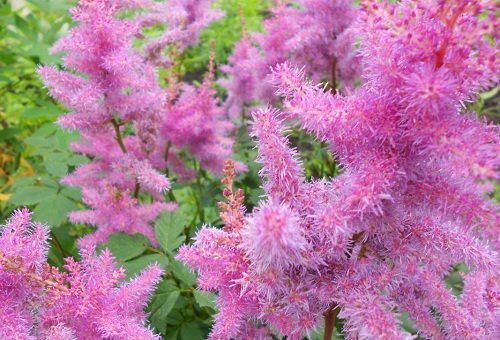
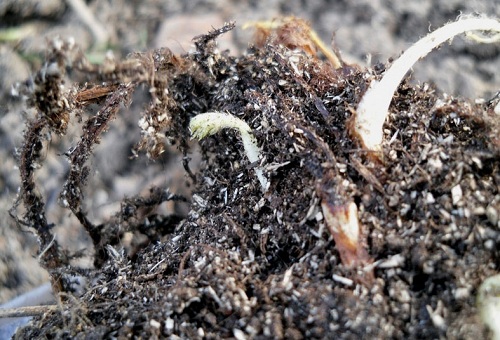
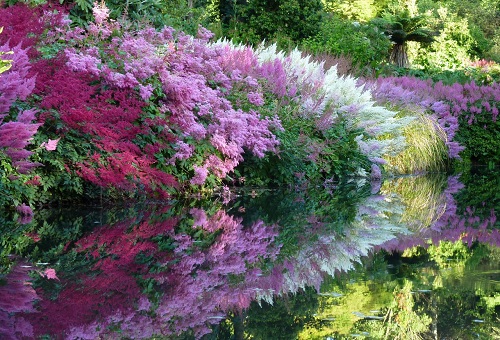
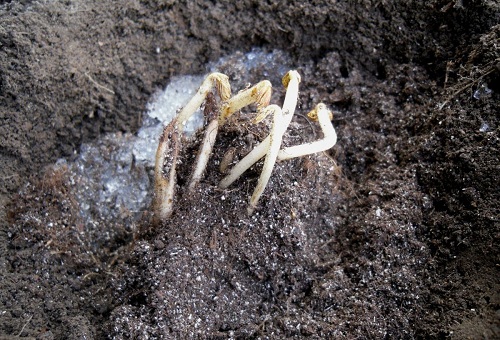

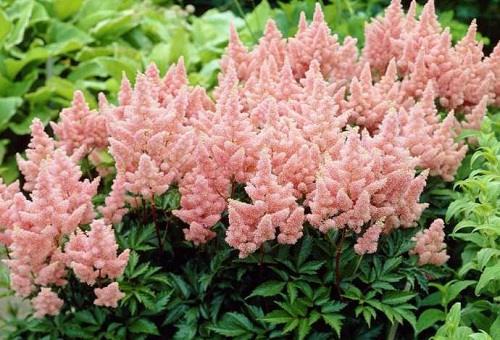
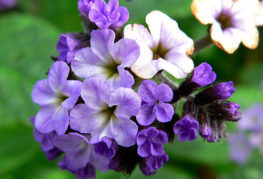
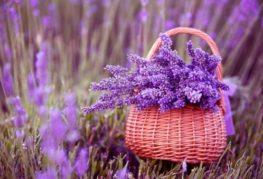
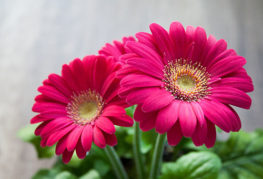
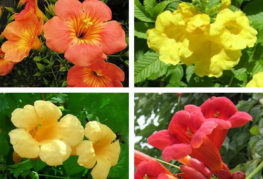
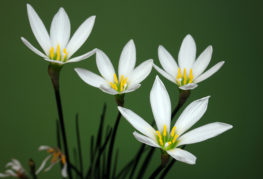
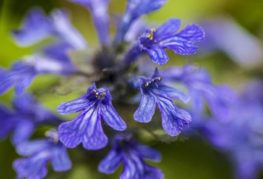
and will be published shortly.